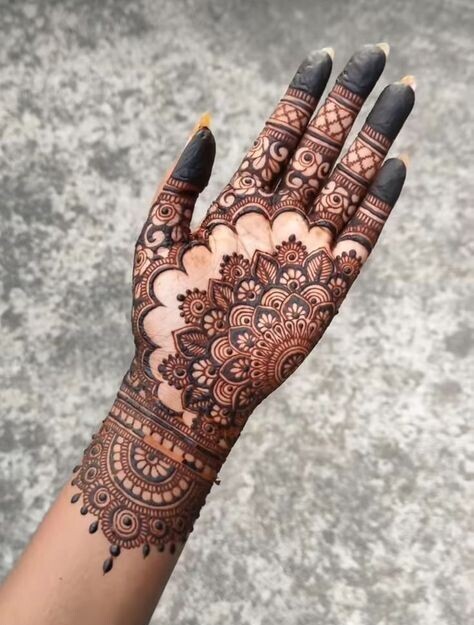
Mehendi, or henna, holds a deeply symbolic place in South Asian culture, especially during weddings and festivals. This traditional art form, using natural dye from the henna plant, is celebrated for its beauty, spiritual significance, and cultural heritage. Here’s a look into the importance of mehendi in South Asian culture:
1. Symbol of Beauty and Celebration
- Mehendi is applied to beautify hands and feet, and it’s a signature element of South Asian bridal adornment. Intricate patterns are drawn to add elegance to the bride’s appearance, symbolizing beauty, femininity, and artistry.
- For weddings, festivals like Diwali, Eid, and Karva Chauth, as well as celebratory events like baby showers, mehendi application marks a joyous occasion and celebration.
2. Blessings and Prosperity
- In traditional South Asian weddings, mehendi is believed to bring blessings, prosperity, and good luck to the bride. It’s considered auspicious, with the belief that the darker the color of the mehendi, the deeper the love between the bride and groom and the stronger the bond with the family.
- Henna patterns are often accompanied by symbols like paisleys, floral designs, and even depictions of gods and goddesses, adding to its role as a bearer of blessings.
3. Purity and Protection
- Mehendi is traditionally applied as a means of protecting the bride and groom from the “evil eye.” The designs are believed to ward off negative energy, and the medicinal properties of henna provide natural cooling and antiseptic benefits.
- Applying mehendi can relieve stress and anxiety for the bride before her big day due to the cooling effect it has on the skin, grounding her and providing a sense of calm.
4. Bridal Tradition and Cultural Heritage
- Mehendi is integral to South Asian bridal customs, typically applied during a special “mehendi ceremony” held a day or two before the wedding. Friends and family gather to celebrate, sing traditional songs, and dance, making it a beautiful way to unite loved ones.
- The ritual is passed down through generations, keeping South Asian cultural heritage alive. Many brides personalize their designs, incorporating initials of their spouses or even symbolic patterns representing personal stories, beliefs, and family traditions.
5. Expression of Individuality and Creativity
- Mehendi designs range from traditional patterns to contemporary fusion styles, allowing brides and guests to express their personalities and creativity. Today, many also use designs that blend styles from different South Asian regions, reflecting the diversity within the culture.
- Personalized touches like hidden names or motifs bring unique meaning to each design, allowing each bride to wear something distinct on her special day.
6. Healing and Holistic Benefits
- Beyond its aesthetic value, henna has natural cooling properties that help reduce stress, calm nerves, and even provide relief from headaches or fever. Traditionally, it’s believed that mehendi application allows a bride to relax before her big day.
- The smell of mehendi, combined with its coolness, is therapeutic and helps create a sense of inner peace, making it more than just an ornamentation but a holistic ritual.
7. Strengthening Social Bonds and Community Spirit
- The mehendi ceremony is a beautiful way for family and friends to gather and celebrate. It’s a time of storytelling, laughter, music, and dance that brings everyone closer together.
- This gathering fosters a community spirit, symbolizing the support and love that surround the couple as they begin a new chapter in life.
Mehendi, therefore, is far more than just a decorative art. It embodies love, joy, spirituality, and cultural pride, making it a cherished ritual in South Asian celebrations that carries rich meaning across generations.
No Responses